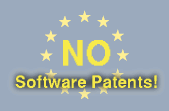Lector de Feeds
wxgtk-3.2.6-1.mga10.src.rpm
In Mageia/cauldron/i586:
wxWidgets is a free C++ library for cross-platform GUI development.
With wxWidgets, you can create applications for different GUIs (GTK+,
Motif/LessTif, MS Windows, Mac) from the same source code.
Categorías: RPMs
systemd-255.12-1.mga10.src.rpm
In Mageia/cauldron/x86_64:
systemd is a system and session manager for Linux, compatible with
SysV and LSB init scripts. systemd provides aggressive parallelization
capabilities, uses socket and D-Bus activation for starting services,
offers on-demand starting of daemons, keeps track of processes using
Linux cgroups, supports snapshotting and restoring of the system
state, maintains mount and automount points and implements an
elaborate transactional dependency-based service control logic. It can
work as a drop-in replacement for sysvinit.
Categorías: RPMs
systemd-255.12-1.mga10.src.rpm
In Mageia/cauldron/i586:
systemd is a system and session manager for Linux, compatible with
SysV and LSB init scripts. systemd provides aggressive parallelization
capabilities, uses socket and D-Bus activation for starting services,
offers on-demand starting of daemons, keeps track of processes using
Linux cgroups, supports snapshotting and restoring of the system
state, maintains mount and automount points and implements an
elaborate transactional dependency-based service control logic. It can
work as a drop-in replacement for sysvinit.
Categorías: RPMs
boost-1.86.0-1.mga10.src.rpm
In Mageia/cauldron/x86_64:
Boost provides free peer-reviewed portable C++ source libraries. The
emphasis is on libraries which work well with the C++ Standard
Library, in the hopes of establishing "existing practice" for
extensions and providing reference implementations so that the Boost
libraries are suitable for eventual standardization. (Some of the
libraries have already been included in the C++ 2011 standard and
others have been proposed to the C++ Standards Committee for inclusion
in future standards.)
Categorías: RPMs
boost-1.86.0-1.mga10.src.rpm
In Mageia/cauldron/i586:
Boost provides free peer-reviewed portable C++ source libraries. The
emphasis is on libraries which work well with the C++ Standard
Library, in the hopes of establishing "existing practice" for
extensions and providing reference implementations so that the Boost
libraries are suitable for eventual standardization. (Some of the
libraries have already been included in the C++ 2011 standard and
others have been proposed to the C++ Standards Committee for inclusion
in future standards.)
Categorías: RPMs
denemo-2.6.40-1.mga10.src.rpm
In Mageia/cauldron/i586:
Denemo is the GNU graphical musical score editor, and serves as a frontend
to Lilypond. Besides lilypond, it can also export music into ABC format.
as well as handling Csound score files playback and MIDI playback.
Categorías: RPMs
denemo-2.6.40-1.mga10.src.rpm
In Mageia/cauldron/x86_64:
Denemo is the GNU graphical musical score editor, and serves as a frontend
to Lilypond. Besides lilypond, it can also export music into ABC format.
as well as handling Csound score files playback and MIDI playback.
Categorías: RPMs
purple-telegram-tdlib-0.8.1-2.git20240907.mga10.src.rpm
In Mageia/cauldron/i586:
A libpurple plugin that adds support for the Telegram messenger.
Categorías: RPMs
purple-telegram-tdlib-0.8.1-2.git20240907.mga10.src.rpm
In Mageia/cauldron/x86_64:
A libpurple plugin that adds support for the Telegram messenger.
Categorías: RPMs
iwd-2.22-1.mga10.src.rpm
In Mageia/cauldron/i586:
The daemon and utilities for controlling and configuring the Wi-Fi network
hardware.
Categorías: RPMs
iwd-2.22-1.mga10.src.rpm
In Mageia/cauldron/x86_64:
The daemon and utilities for controlling and configuring the Wi-Fi network
hardware.
Categorías: RPMs
ltris-2.0.1-1.mga10.src.rpm
In Mageia/cauldron/x86_64:
o Tetris clone using SDL
o Sound
o Menu
o Controls can be redefined
o Block preview
o Starting level between 0 and 9
o Various backgrounds
o HighScores
o Nice graphics
o Smooth gameplay
o Cool effects (transparency, animations)
o Two player mode
o Two game modes
Categorías: RPMs
ltris-2.0.1-1.mga10.src.rpm
In Mageia/cauldron/i586:
o Tetris clone using SDL
o Sound
o Menu
o Controls can be redefined
o Block preview
o Starting level between 0 and 9
o Various backgrounds
o HighScores
o Nice graphics
o Smooth gameplay
o Cool effects (transparency, animations)
o Two player mode
o Two game modes
Categorías: RPMs
python-pythran-0.16.1-1.mga10.src.rpm
In Mageia/cauldron/i586:
Pythran is an ahead of time compiler for a subset of the Python language, with
a focus on scientific computing. It takes a Python module annotated with a few
interface descriptions and turns it into a native Python module with the same
interface, but (hopefully) faster.
It is meant to efficiently compile scientific programs, and takes advantage of
multi-cores and SIMD instruction units.
Categorías: RPMs
python-pythran-0.16.1-1.mga10.src.rpm
In Mageia/cauldron/x86_64:
Pythran is an ahead of time compiler for a subset of the Python language, with
a focus on scientific computing. It takes a Python module annotated with a few
interface descriptions and turns it into a native Python module with the same
interface, but (hopefully) faster.
It is meant to efficiently compile scientific programs, and takes advantage of
multi-cores and SIMD instruction units.
Categorías: RPMs
cvechecker-4.0-2.mga10.src.rpm
In Mageia/cauldron/x86_64:
cvechecker reports about possible vulnerabilities on your system by scanning
the installed software and matching the results with the CVE database. This is
not a bullet-proof method and you will most likely have many false positives,
but it is still better than nothing, especially if you are running a
distribution with little security coverage.
Categorías: RPMs
cvechecker-4.0-2.mga10.src.rpm
In Mageia/cauldron/i586:
cvechecker reports about possible vulnerabilities on your system by scanning
the installed software and matching the results with the CVE database. This is
not a bullet-proof method and you will most likely have many false positives,
but it is still better than nothing, especially if you are running a
distribution with little security coverage.
Categorías: RPMs
tdlib-1.8.35-1.git20240813.mga10.src.rpm
In Mageia/cauldron/x86_64:
TDLib (Telegram Database library) is a cross-platform library for
building Telegram clients. It can be easily used from almost any
programming language.
Categorías: RPMs
tdlib-1.8.35-1.git20240813.mga10.src.rpm
In Mageia/cauldron/i586:
TDLib (Telegram Database library) is a cross-platform library for
building Telegram clients. It can be easily used from almost any
programming language.
Categorías: RPMs
thonny-4.1.6-1.mga10.src.rpm
In Mageia/cauldron/x86_64:
Thonny is a simple Python IDE with features useful for learning programming.
Categorías: RPMs




